
The Best Alternative to Crutches - A Guide to Optimize Your Comfort
- After having a foot injury or coming off surgery, and you find yourself on crutches—you might be wondering, "how in the world am I supposed to go back to normal?"
Frustration kicks in, and you feel sentenced to a life of struggle to merely be able to move around from point A to point B. Traditional crutches as a means of mobility during your recovery period is an outdated solution.
Here are some disadvantages to using crutches:
What if we told you there are modern alternatives that will grant you independence and continue to do your day-to-day as usual as possible?
Below are our top recommendations of what to use instead of crutches:
Ergonomic Crutches
Modern and ergonomic crutches, such as the In-Motion Pro, addresses a lot of the disadvantages of traditional crutches. At first glance, these don't look much different than conventional crutches, but the difference in feeling is vast.
They are designed with shock absorption mechanisms, which minimizes stress on your arms.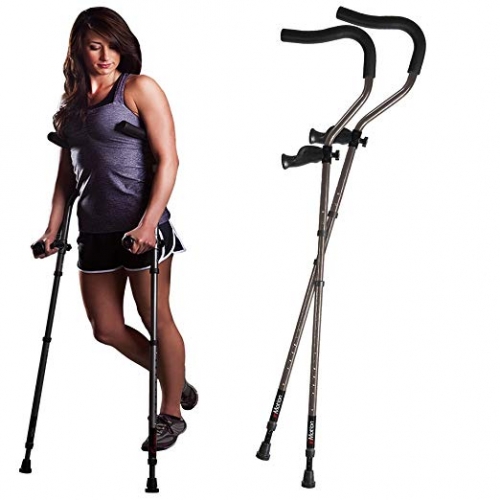
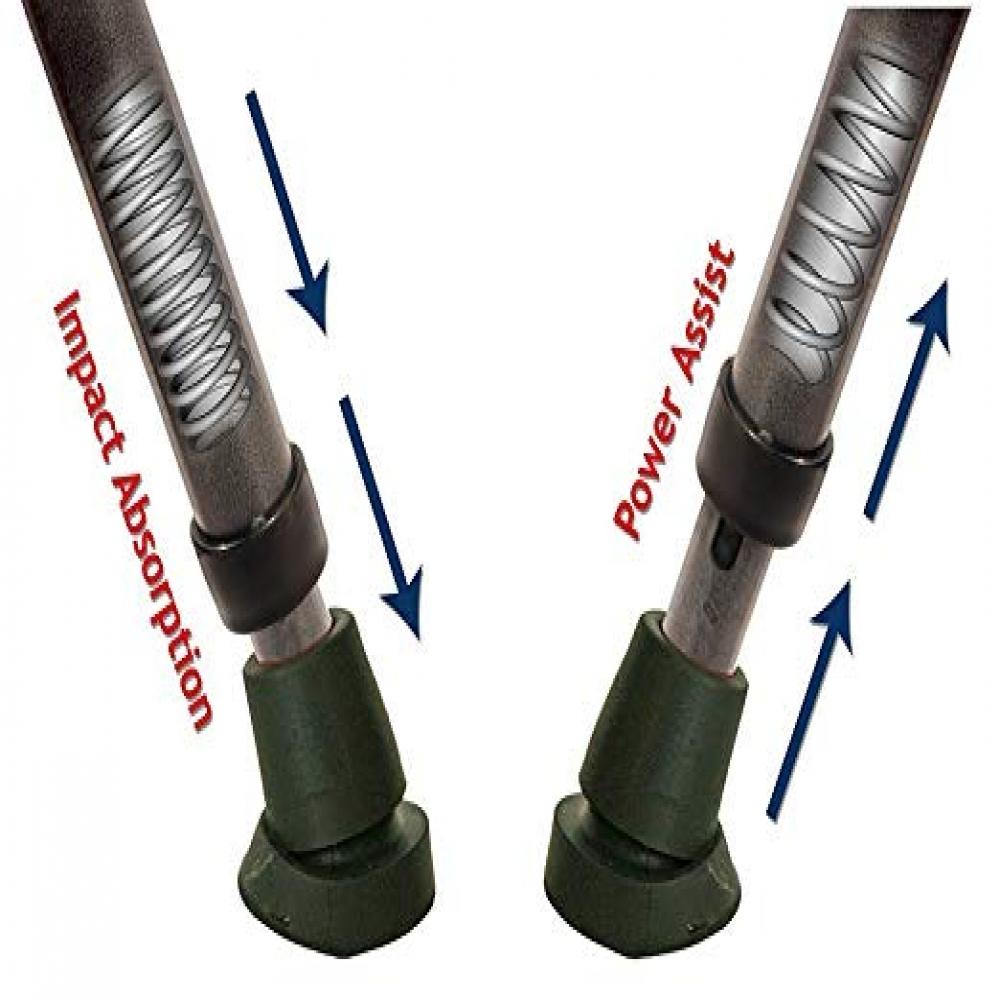
They promote stability and proper posture. They help distribute weight all throughout your upper body, not solely your armpits. Finally, they are foldable so they can be taken anywhere easily.
The fact that these crutches improve your posture is a huge benefit. On standard crutches, we can be very tempted to bend over and slouch our posture. This is not only bad for your back, but it also puts added stress on other areas of your body not used to taking that much strain.
Having a correct and straight posture is a beneficial aid for your recovery. The fact that these crutches have impact absorption and power assist springs located inside the crutch assembly is a game-changer.
iWalk 2.0
The iWALK3.0 is another excellent alternative that is hands-free. Unlike a knee walker, this model allows the user the ability to navigate stairs and the ability to have your hands completely free when moving around.
Although it does have the advantage of getting around wholly hands free, we believe it only benefits only a particular set of people. If you're not physically fit and have core and leg strength, then move on to the next suggestion.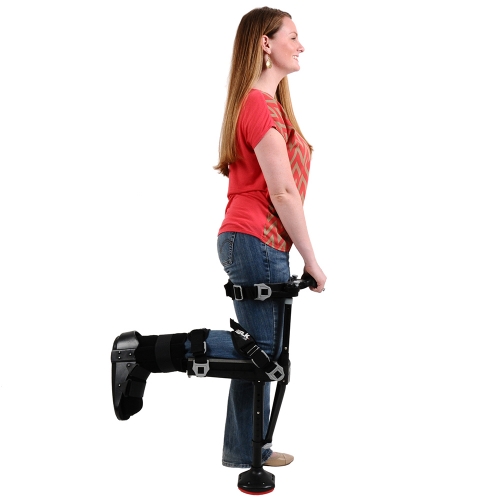

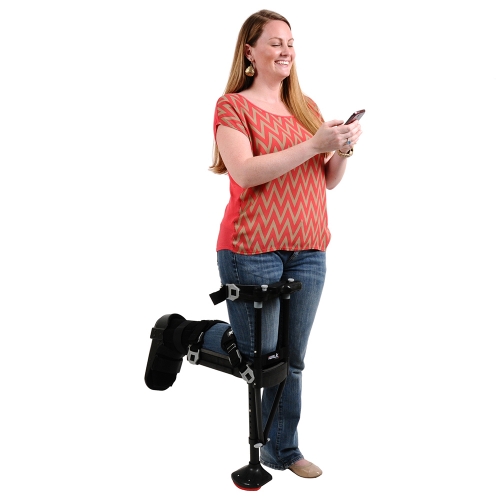
The second disadvantage is that you have to be strapped to it at all times, putting it on and off takes time.
These two disadvantages aside, the iWALK2.0 lets you continue your daily routines while also providing hands down some of the best maneuverability in the business. Simple tasks such as grocery shopping, laundry, washing dishes, carrying a drink without spilling it all over yourself. You can continue to live as close to your normal life as it gets.
Knee Scooters
Knee scooters (also called knee walkers, roll abouts, or non-weight bearing scooters) are an excellent alternative to crutches after foot surgery.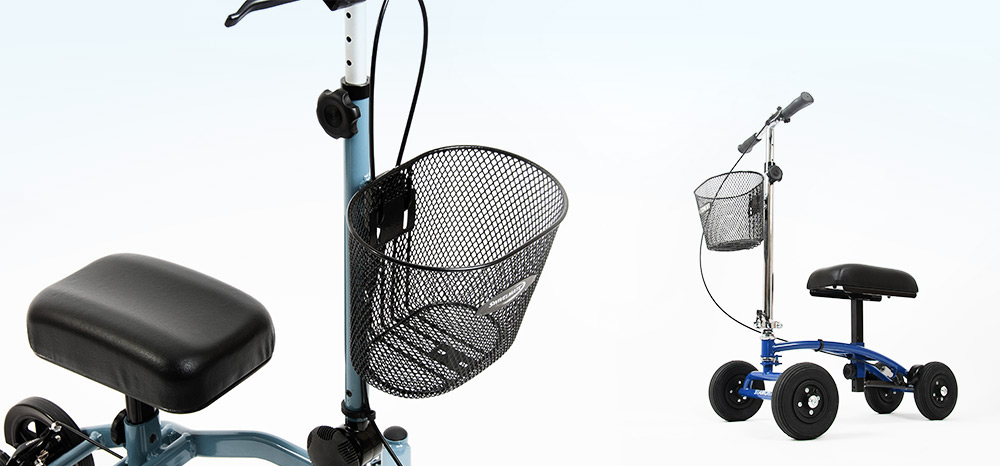
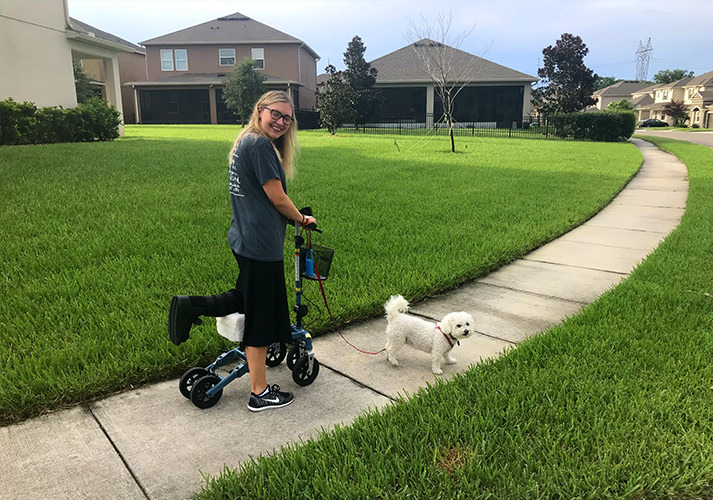
A knee scooter is a modern solution to keeping your injured leg non-weight bearing. They were designed with comfort in mind. Its main goal is to provide your body support in the most comfortable way possible. They enable you to move around quickly with ease, and more stability than what crutches or an iWalk would offer.
You'll be able to get around much quicker—all while remaining securely balanced. Knee walkers are relatively pain-free to use. In essence, they will give you your independence back.
Their main drawback is that they can only be used for below the knee injuries. But there's an alternative: seated knee scooters.
Further Reading: What is a Knee Scooter? The Complete GuideSeated Knee Scooter
When it comes to leg injuries, you can only use a knee scooter if you have a below the knee injury. Seated knee scooters are used to address a range of leg injuries, including below the knee injuries.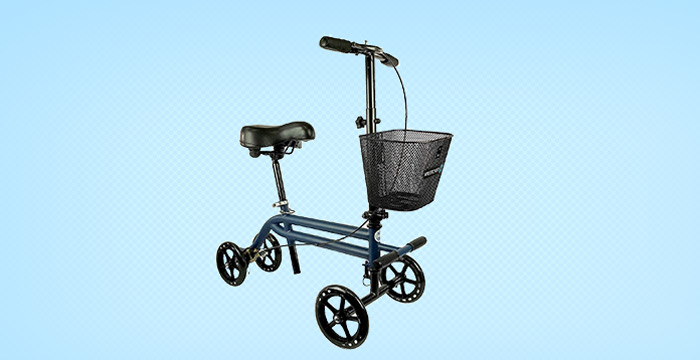
Seated knee scooters allow the same maneuverability as a knee scooter.
They operate almost the same as you would a bicycle. You take a seat, you extend and rest your leg on a peg, then use the handlebars to turn the direction you want—while propelling yourself with your good foot.
Their main drawback is that you may tire from prolonged use.
A case for both
While we firmly believe that crutches should not be your primary mobility aid, their use should not be discarded entirely. They still have a place as a secondary aid to your primary mobility device. More on this below:
Further Reading: Knee Scooter or Crutches? Why you may need both.
More Great Rent A Knee Walker News & Stories
- •
- •
- •
- •

